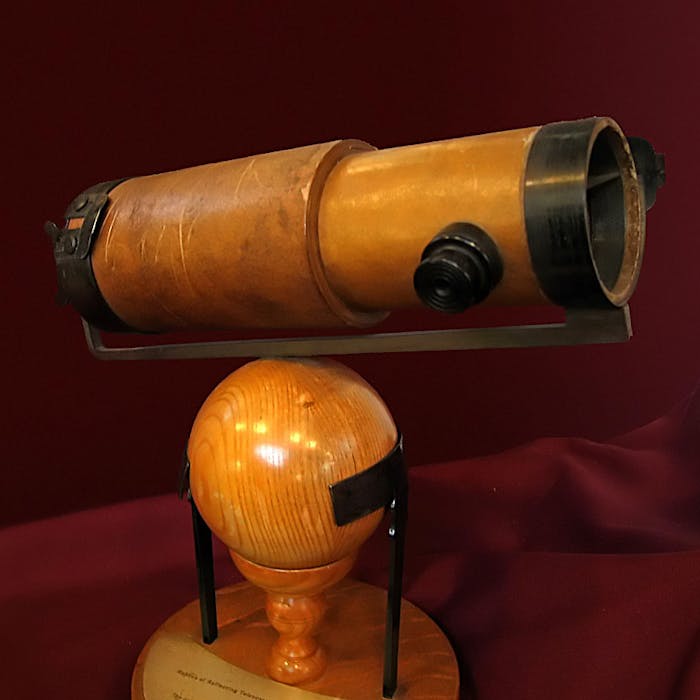
The Reflecting Telescope
Devised by Isaac Newton in 1668, the reflecting telescope changed the field of astronomy forever. Instead of using several lenses as in a refracting telescope (such as the type Galileo created), a reflecting telescope uses mirrors to focus light.
After studying the reflecting telescopes created by Galileo and Kepler, Newton determined that when light was refracted through the lens of the telescope, the image suffered from severe chromatic aberration as the lenses split the light into its constituent colours.
The idea of a telescope using mirrors instead of lenses had already occurred to Galileo and others, but Newton was the first to build a functioning reflecting telescope using a concave primary mirror and a flat diagonal secondary mirror.
His telescope was shown to the Royal Society of London, one of the most distinguished organisations promoting science. The demonstration was so successful that Newton was elected to membership to the Royal Society immediately.
This "Newtonian Telescope" was more powerful than any refracting telescope of the same size. However, reflecting telescopes proved difficult to construct. The mirrors were hard to polish to the proper shape.
It was fifty years before another member of the Royal Society, John Hadley, improved the mirror by making it have a parabolic shape instead of Newton’s spherical shape. A parabolic mirror is able to focus all of the light to one point and thus provides a crisper image than does a spherical mirror.
Astronomers such as William Herschel ground their own mirrors to make their own telescopes. It took exhausting hours of effort to achieve the required effect. When Herschel discovered the planet Uranus in 1781, it was whilst using the powerful Newtonian reflecting telescope he had built himself.
The reflecting telescope is the most popular type of telescope in the modern day.
Further reading
Links to external websites are not maintained by Bite Sized Britain. They are provided to give users access to additional information. Bite Sized Britain is not responsible for the content of these external websites.
